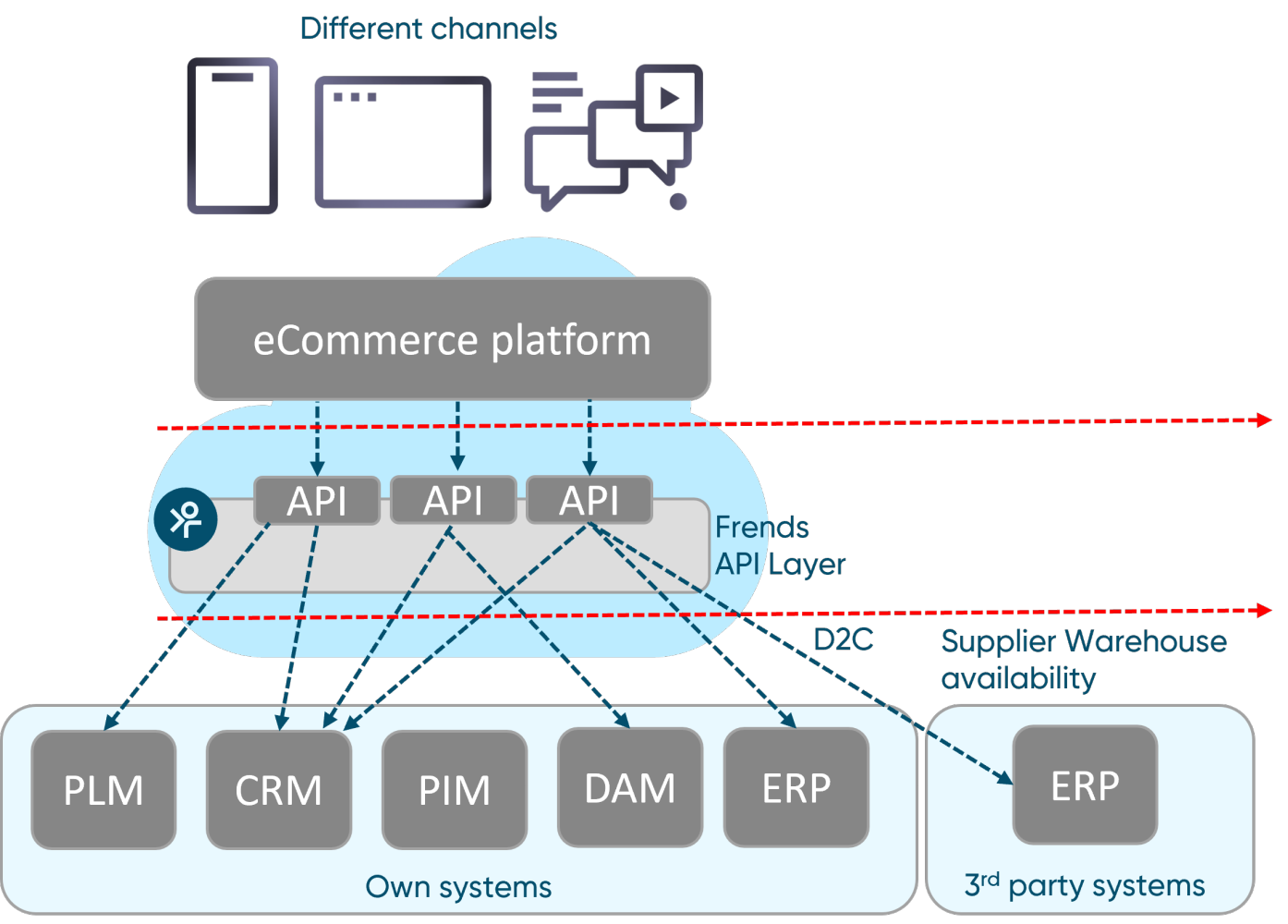3 tips to save money with an iPaaS

In the current economic situation worldwide, it's good to see how your iPaaS can save you money. Here are three approaches to enable cost savings.
They work separately, yet applying two or all of them will result in a cumulative effect more significant than their sum. I'll be using Frends iPaaS as an example of an integration platform in the cases I present.
Tip 1: Cost-savings with automation
While an iPaaS (Integration Platform as a Service) can enable your digitalization as an API platform, they are also excellent automation platforms. Modern iPaaS platform can visually model and automate your business processes, technical parts, or even the whole process. You may wonder whether that is what RPA (Robotic Process Automation) platforms do. Yes, but iPaaS solutions do it more robustly than mimicking what humans do with user interfaces. They automate the underlying process on an interface level communicating with your business systems directly via, e.g., APIs. By automating your core enterprise processes you:
- Reduce the amount of human workforce needed.
- Reduce the number of human errors in process execution.
- Speed up the process execution enormously.
The iPaaS automation, often called Business Process Automation (BPA), is always the more cost-efficient choice when automating enterprise-level processes. There is also a place for RPA, of course. However, BPA is the best choice in the following scenarios:
- When underlying systems have interfaces.
- When process execution volumes are high.
- When there are a lot of concurrent executions of the process.
- When dealing with business-critical enterprise processes.
RPA is your choice when...
- The process is unknown, and only what people do, is clear.
- There are no interfaces in target systems.
- There is a lot of clicking inside the user interface that cannot be done via APIs.
- You are doing citizen automation - in other words automating specific tasks that are part of the process by yourself, not the enterprise-level process itself.
The best solution is to consider both as tools in a toolbox. Then, choose the best for each case, even within the automation of a single process. For a more explained view on this, see my article on hyperautomation.
Tip 2: Prolong the lifetime of your core systems by a decade with facade APIs
Changing a core system in a midsize or larger company is a notoriously tedious challenge. While it is important not to grow the technical debt by postponing the upgrade of old system-of-records to modern best-of-breed ones, sometimes resources require graceful postponing. For example, migrating to a new ERP (Enterprise Resource Planning) is a massive project requiring people, time, and money.
There is a solution to gracefully increase the lifetime of old systems, ERPs, and alike. With enterprise iPaaS like Frends, you can prolong the lifetime of your core system with the following approaches: Facade APIs are business APIs that hide the inabilities of old systems. For example, suppose old systems have outdated/bug-prone interfaces. In that case, iPaaS can still connect to them and enrich data from other sources to create a single composite API to serve your portal, digital commerce platform, and the alike. By prolonging lifetime of a core IT system like ERP, has enormous meaning to IT spend. Think of it - your 5M€ ERP investment's life time can be 12 years instead of 5.
Suppose your old systems cannot handle the load from other systems, partners, and customer portals. In that case, you can always create a middle layer with iPaaS that include scalable data storage from the cloud. In this approach, the load from other systems goes to the iPaaS, not the underlying legacy system. As a side effect, your legacy system can have maintenance breaks without even noticing the system connected to the iPaaS API layer. Suppose new business logic and rules are needed but not implemented in legacy systems. In that case, you can always implement those in the iPaaS layer with a low time-to-production low-code approach. A bonus is that you don't tailor your legacy and make the forthcoming system update much more straightforward and less costly.

Tip 3: Go for the composable architecture to be agile and cost efficient
Being composable in IT architecture and Business architecture is a hot topic. There are multiple reasons for that. Composable Business promises the following benefits:
- Scalability in terms of technical resources.
- Efficiency in terms of freedom to choose best-of-breed products and technology matching your business needs.
- Adjustability to changing external or internal needs.
- Ability to alter line-of-business systems or even change them without that change to spread to other systems.
- Multichannel front with a single backend.
In the end, all these benefits lead to cost savings. In essence, being composable is an architectural decision to be uncoupled. Building uncoupled IT means you build your composable IT with products and technologies with excellent connectivity, like microservices or products with scalable APIs.
However, having high connectivity pieces and building blocks is not enough. What happens if you connect these directly with their interfaces? You quickly get a point-to-point architecture that leads to an IT nightmare called "Integration Spaghetti." With spaghetti architecture, you create a system landscape where every modification in the system or change of the system itself has an impact on other systems. You also lose the technical monitoring ability and, in the end, have lots of custom code to upkeep. Gartner analyzed years ago that over half of the IT budget goes to the maintenance of spaghetti IT in companies that let it happen.
How to implement composable architecture with iPaaS?
Enterprise iPaaS, like Frends Enterprise iPaaS, is the backbone for composable architecture in general and eCommerce cases. You can think of it as a layer that:
- Removes the direct connections between systems that lead to spaghetti architecture.
- Enables using old legacy systems as a data source for the digital front end.
- Allows you to build business-level APIs and microservices that combine old and new systems.
- Enables modularity in your system landscape.
Using a layered architecture, you can change underlying systems like CRM without changing the digital front or other systems - this saves money. Prolong the life cycle of legacy systems by creating a business API that can store its data and serve it much faster than the original legacy system could. The APIs serve every channel and need. Business APIs are inherently reusable everywhere, and reusability equals cost savings.
Want to see how we could save money in your enterprise? Let us impress you! Book a demo: https://frends.com/demo


























































